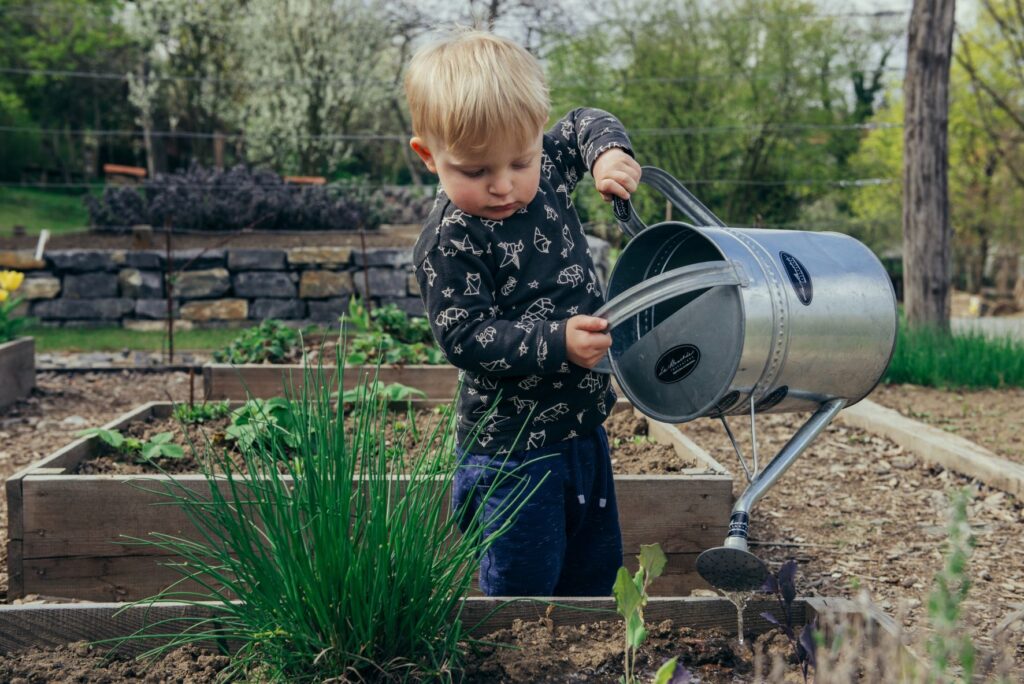In my last post I suggested that a little research will go a long way towards the success of your garden. Knowing about your growing conditions and the compatibility of various plants will not only set you up for a rewarding first season, but it will ensure the perennials, shrubs, and trees selected are able to flourish during the growing season and withstand the winter, saving you money and effort for years to come. In so saying “do your research” it is important that you know where to find the most reliable information. In this post, I will outline what I consider to be the best type of resources, and only name resources that are relevant to my own growing location.
Of course, the AllSage Gardener website should be your very first stop for information and re-direction, but there are many great sources for landscape design and plant details.
These are my go-to’s:

Google (internet)
Nothing rivals the internet for information and inspiration – and, of course, there’s Pinterest – lovely images and creative suggestions for designing your oasis. In fact, my entire business, the AllSage Gardener, can only be accessed from the internet. Key in a few search parameters and, like magic, there’s information at your fingertips. The internet gathers information from every corner of the globe, but outdoor gardening needs information tailored to your location and climate. Not all the information you will find is valuable. Before you implement advice from the internet, be sure to know the area they speak from and that the advice given is relevant to your location. Gardening advice for Hawaii is not much good to someone living north of the 49th parallel.

Radio & television
I learned so much from a call-in radio show, Let’s Talk Gardening! I had listened to that show most Sunday mornings since the early 90’s – oh my, that’s 30 years! It is still broadcast from 9 to 11 MST on the same local station, CHQR 770. The original hosts, seemed to know EVERYTHING about gardening! Today, despite (or maybe because of) a change of hosts, I don’t often listen anymore. In some ways, I feel like I have outgrown the information they offer now, but a rookie gardener can only benefit from this folksy discussion – and, truth be told, I do always learn something new. Besides, it’s not a bad way to spend a Sunday morning.

Magazines
These are best for inspiration! Again, beautiful professional photographs to spark your creative juices. There is a wide array of home and garden magazines, but like the internet, it’s important you know where they are published. This is not to say you cannot find immense inspiration from these publications, but it can be disheartening to learn you cannot locate or sustain many of the plantings they use. A publication I like for Zones 2, 3 & 4 is The Gardener (previously The Prairie Gardener, a name I wish they had retained). It is one of the few still in print and only published quarterly, but totally worth the wait – stunning photography and relevant detailed information about specific plants hardy in these zones! Another fun publication is The Old Farmer’s Almanac, but be sure to pick up the Canadian edition (if you’re in Canada). Filled with gardening tips, plant profiles, recipes, and fun facts, the Almanac is an entertaining read.
For once, my information hoarding pays off! Thankfully, I kept many old editions of my favourite magazines – Alberta Gardener and Gardens West – publications specific to the uniquities of prairie gardening – as their publication was discontinued and no longer available even virtually. Another magazine no longer in print is Canadian Gardening – a quality publication that offered a variety of ideas and advice – although “Canadian” was somewhat misleading. Anyone in Canada knows this country is vast and diverse. What you can grow in Atlantic Canada, is not necessarily hardy in Ontario and almost certainly not fond of the arid Prairies. While Alberta and BC are both in Western Canada, most of southern BC is a Zone 4 – 5 and warmer. Without extra special treatment, zone 5 and some zone 4 plants struggle in the harsh variability and desiccating winds of southern Alberta’s proximity to the Rockies’ eastern. (Don’t know your “zone”? Go here to find out.)

Books
I am a total bibliophile and books about gardening or plants are particular favourites in my rather excessive collection. According to Carol Martin who wrote, Cultivating Canadian gardens: the history of gardening in Canada: an essay, in 1973 there were only 26 printed publications about gardening. Yet so many have been published since! And I know, because I own an awful lot of them! Garden design, plant biology, gardening practices, plant maintenance (pruning, dividing, mulching, watering), amending and retaining soil, favourite plants of notable Alberta gardeners, among others too numerous to detail here. As a side note… I also have a ton of books about everything else from philosophy to politics, so my point is, I am not necessarily discerning in my collection, nor do I suggest that you need to have more than a couple comprehensive resources. Plant biology, care, and maintenance requirements are pretty much the same throughout the ages – I have books from the 1930’s that are still relevant today – plants don’t know if it is 2022 or 1902. However, methods change and develop as we learn how to better care for our plants while still caring for our climate and all of earth’s creatures. Where my 1930’s references might recommend tilling the soil to a fine powder, use DDT to eliminate aphids, and remove all natural plantings to make way for food crops; my 2020’s books are aghast with horror at even the mention of any of those things! Using peat moss to amend soil was our go-to for many years, only to learn that our peat bogs – an important element in our ecosystem – are rapidly disappearing and cannot be replaced or rejuvenated. Long way of making a point, make sure the books you use are consistent with modern gardening practices and, again, relevant to your location.
A couple older publications recommended for my area are, Gardening Under the Arch by the Millarville Horticultural Society; The Calgary Gardener by the Calgary Horticultural Society; and, more recently published books written by Lyndon Penner – The Chinook Short Season Yard, Garden Design for the Short Season Yard, and Native Plants of the Short Season Yard (notice the “short season” theme) are specific to the southern prairies and more specifically, Chinook Country. When we say “short season” we mean SHORT! Our reliably frost-free period is 90 days (some will say 120 days but it is not my typical experience) and runs from around the beginning of June, to the end of August – one of the shortest growing seasons in southern Canada. Any frost-free time before or after is considered a gift bestowed and gratefully received.

Local horticultural societies
As mentioned, horticultural societies often publish reference books, magazines and newsletters containing a wealth of specialized information about gardening but, most importantly, they are specific to gardening in YOUR area! Hort societies are usually non-profit and depend heavily on their paid memberships and corporate donations. Here in Calgary, the Calgary Horticultural Society (aka “CalHort” Society) offers classes and workshops on a multitude of topics relating to gardening and plants. They publish a weekly e-newsletter and a monthly e-magazine accessible by its members, both chock full with helpful guidance for the novice and experienced gardener. They host a garden show each year where local businesses and societies can showcase their products and services. They support Reader Rock Garden, a provincial historical site located in Calgary’s downtown – an inspiring example of a prairie garden – proving that despite our harsh conditions, beauty and diversity is possible in this unpredictable climate. To add honey to the pot, many local gardening supply centres, affiliates of the CalHort Society, offer members discounts of 10-15% – a nice saving each spring – making up much of your membership fee. Check out their website and, if you’re in Calgary, buy a membership; or check your own community for the local hort society. Most every city and town has one.

Local gardeners
Gardening seems to encourage communication and sharing. Even now when growing information is readily available in libraries and bookstores, on radio and television, gardeners tend to find personal discussion more satisfying.
Carol Martin
That neighbour with the enviable front yard can probably tell you in ten minutes what it would take hours to find in the other resources. Tried and true experience rivals formal publications any old day – which is why the AllSage Gardener is such a great source for answering your gardening questions. Tried and true is our thing! The greatest thing about gardeners is they can barely contain themselves when they find a practice that works, or a plant that does particularly well, esthetically or resiliently, so no need to be shy to ask for their advice or recommendations. I have learned many effective solutions to my gardening problems by talking to others standing in the seasonal aisle at Canadian Tire. Here in Chinook Country, because our growing conditions can be exceptionally challenging – short frost-free season, desiccating winds, rapidly changing weather (from sunshine to hail in 30 minutes!), clay soils, etc. – our gardeners wear their successes like badges of honour. When asked “what’s the best way to…?” they will clamour over each other to offer their advice. In fact, in Carol Martin’s essay, Cultivating Canadian gardens: the history of gardening in Canada: an essay she says it best: Gardening seems to encourage communication and sharing. Even now when growing information is readily available in libraries and bookstores, on radio and television, gardeners tend to find personal discussion more satisfying.
I cannot argue with that, and I look forward to more discussions with you. Check back for my upcoming posts profiling the AllSage Gardener’s plant favourites.
